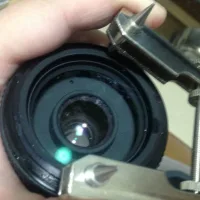This depends on the particular lens. Most classic lenses align properly when the retaining ring secures the elements in the barrel. The machining on some barrels is so good that it it is possible to align elements in a group that have come apart, the Canon 135/3.5 RF lens is an example. It is the only one that I've had the elements in a group come apart and have to fix.
SO- if the lens is not worth the price of a repair, which can be $100 and up easily, it is worth the attempt to repair. If the lens is of sentimental value, might also change the decision. If the lens is going to sit forever unused, and you have an interest in DIY repair, worth the effort of buying some junk lenses off Ebay to practice on. It's not that hard for classic lenses. I would not mess with internals of many AF lenses. Only did one of those, a AF-S Nikkor zoom that someone tried to repair and gave up. $25 for a $400 lens, took 10 minutes to put back together. Gave it to a friend setting up a photography business, after testing it. Lesson to be learned- practice on junk lenses first, and be setup for taking things apart. I use Ice Cube Trays to keep everything in order. Also learned to mark the outside surface of some optics before removing, so they go back with the correct orientation. Some optics are "almost" but not quite symmetrical.
1952 Jupiter-3 Rebuild album hosted in ImgBB

ibb.co
Moved all the glass into a new barrel, above.
Anyone with manual focus nikon lenses-
Classic Nikkors Repair and DIY maintenance

richardhaw.com
The best on the web.


